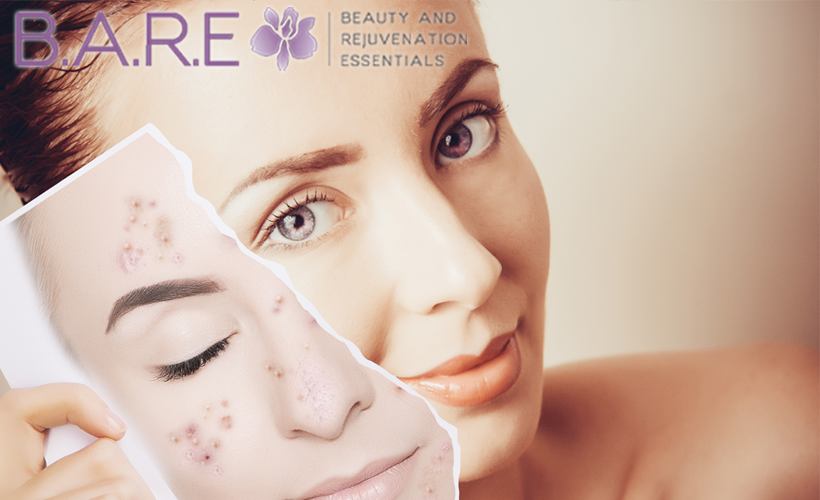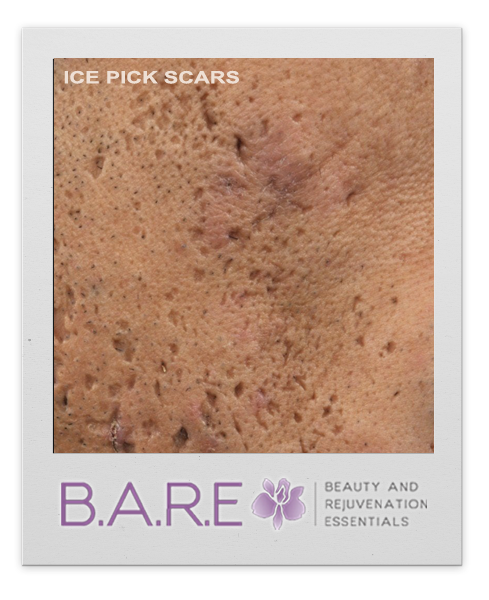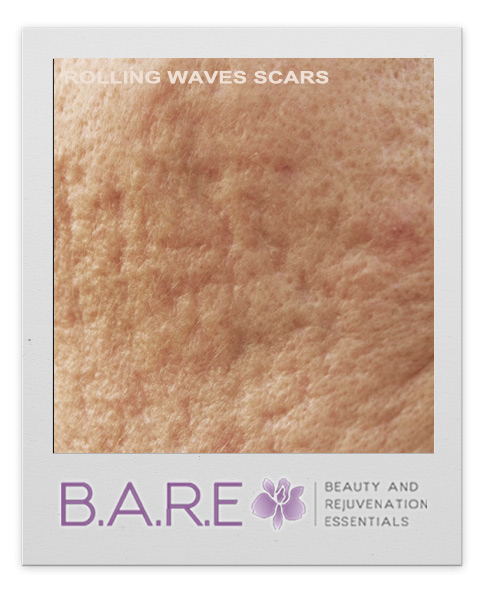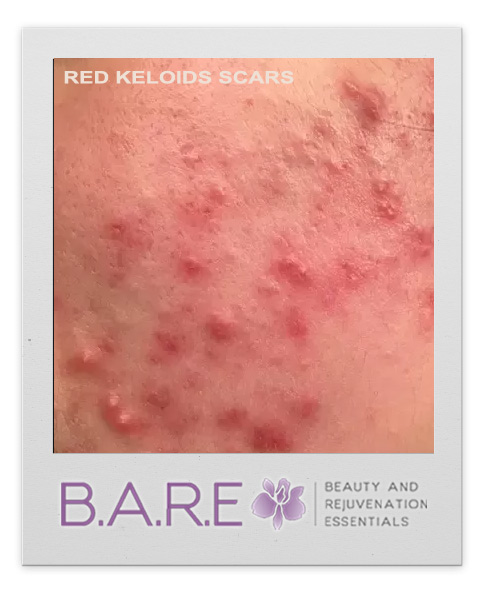
Uncover Beautiful Skin with Acne Scar Laser Treatments
Acne is a common complaint for many teenagers and adults. We can help with acne laser treatments in Windsor. From tiny blackheads to large cystic nodules, acne can affect your skin’s appearance. Dull, uneven skin may make you feel self-conscious.
Unfortunately, even when acne heals, scars may remain. Acne scars develop when acne becomes inflamed due to excess oil, dead cells, and bacteria. Swelling causes the follicle wall to break. This creates a lesion in the skin. When the pimple heals, it may leave behind a red or pink scar. If acne scars are affecting your self-confidence, we have skin laser treatment in Windsor, Ontario that can help.
You may have tried other acne scar treatments that promise to reduce the appearance of scars. Over-the-counter products that contain harsh chemicals promise to reverse the aging process and lead to brighter skin. However, these gels and creams often promise more than they can deliver. The right treatment depends on the type of acne scar we are dealing with.
Types of Acne Scarring and Skin Types
Many scars are actually hyperpigmentation, dark brown or red spots that appear when the acne has healed. Popular treatments for hyperpigmentation exfoliate the dead skin cells. Stubborn hyperpigmentation spots may require a more effective treatment, such as laser acne scar treatments.
Ice Pick Scars:
Ice pick scars look like needle impressions in the skin. These scars form when skin layers lose collagen, which creates a hole in the skin. If you’ve suffered from cystic acne, then you are more likely to experience this type of scarring.
While ice pick scars look like needle puncture marks, boxcar scars are wider and deeper. These round or oval-shaped scars look like craters on the skin. Often, patients will have multiple boxcar scars together. Commonly found on the cheeks and forehead, these large scars can be difficult to treat. Shallow boxcar scars can be treated with procedures like microdermabrasion or dermabrasion that only affect the top layer of the skin. Deep boxcar scars may require FSR fractional skin resurfacing, which goes deeper into the skin’s layers to deliver treatment to the dermis.
Waves or Rolling Scars:
Severe acne can lead to waves of scarring, called rolling scars. These scars have soft, smooth shoulders and create a wave pattern across the skin. This type of scarring becomes more visible as you age and gives skin a rough, uneven texture. As the skin loses elasticity, these wave patterns may become more noticeable.
The best way to treat this type of damaged skin is through laser acne scar treatments that resurface the skin.
Red Keloids Scars:
Keloids are bumpy red scars that develop during the healing process. Keloid scars are more common in people with darker skin tones. These raised bumps occur when too many skin cells are produced as the acne heals. Treating keloid scars is a multi-step process that can include creams, cortisone injections and surgery. A skin treatment using lasers is excellent for reducing keloid scars.
Now that you know about common acne scar types, it’s important to select the best treatment. Over-the-counter gels and creams can promote some new cell growth, but they only treat the top layers of your skin. The most effective treatment extends below the epidermis into the dermis to promote skin-tightening and resurfacing. FSR Fractional Skin Resurfacing is the best way to achieve beautiful skin in Windsor, Ontario.
Acne Skin Types (know your skin)
Dry Skin:
Because acne starts when the body produces excess oil, it’s easy to associate acne with shiny or oily skin. The truth is acne can affect all skin types and is usually a byproduct of hormones. Even though your skin seems dry, you can still suffer from acne pimples from time to time. Again, hormones.
Oily Skin:
A certain amount of oil (also known as “sebum”) is needed to keep our skin healthy and soft. When pores are clean, oil flows freely from the inside of our pours to lubricate your skin’s surface, giving you moist skin but a clear complexion.
Combination Skin:
A common skin type is simply called combination skin, a situation where both oily and dry skin co-exists. Certain areas of the face like the nose, chin, and forehead may be oilier were other areas of the face, like the cheeks, tend to be drier.
Who is this treatment for?
FSR Fractional Skin Resurfacing will produce these results for all types of clients:
- Brightening skin
- Reduction of hyperpigmentation
- Improvement of skin texture
- Smoothing of wrinkles
- Treatment of acne scars
What can you expect during this procedure?
Many acne scar treatments are painful and burn the skin. Fractional Skin Resurfacing is more comfortable than many procedures. FSR uses the 3DEEP fractional wand with deep lasers that add a pulsing sensation to puncture the skin layers in a uniform pattern.
As the skin heals, the impressions fill with new cells. Collagen fibers deep in the dermis knit together tighter. The result is tighter, smoother skin. The FSR treatment reduces the appearance of fine lines and wrinkles, diminishes acne scars and treats hyperpigmentation.
One of the biggest questions patients have is, “Does Fractional Skin Resurfacing hurt?” Patients may experience some minor discomfort. The procedure is safe and quick, so even minor discomfort only lasts a short time.
Healing varies depending on the strength of the treatment and the extent of the scarring. You may experience shedding of dead skin cells. Most patients can expect to see a noticeable change in their skin’s appearance after a few days. Patients should follow all instructions given by their dermatologist to reduce healing times.
The 3Deep Fractional wand is appropriate for all skin types. It is an effective treatment for minor cases of hyperpigmentation all the way to serious cases of rolling acne scars.
If you are looking to improve your damaged skin in Windsor, Ontario please contact us to learn about your options!




